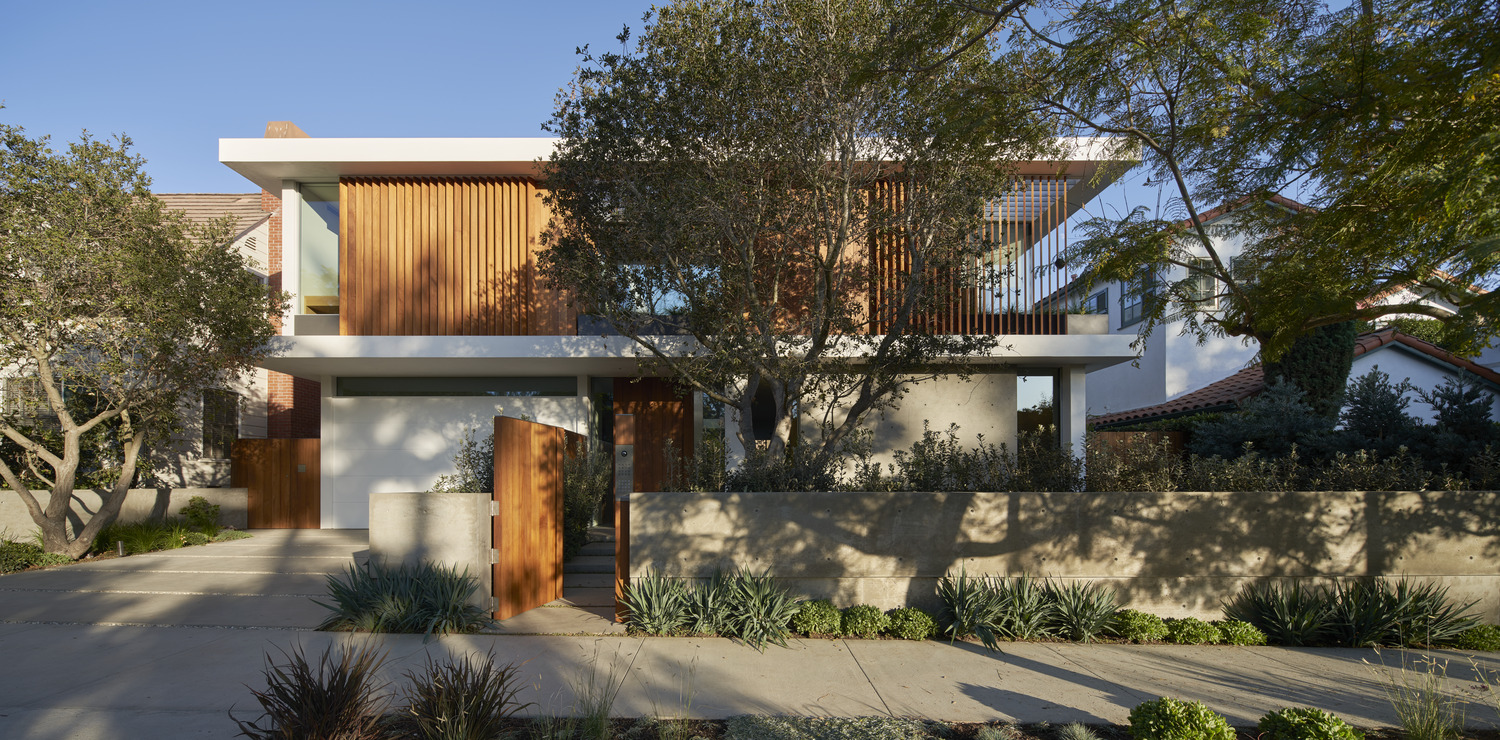Architects: Want to have your project featured? Showcase your work through Architizer and sign up for our inspirational newsletters.
In hot and humid regions like Southeast Asia and parts of South America, bamboo has long been a go-to for architectural construction. However, the once-traditional material is now garnering increasing attention in modern architectural design around the world. The advantages of bamboo as building materials include strength, flexibility and availability (in areas where it is grown locally), promising well-ventilated and quickly-built spaces.
One reason that architects are now reconsidering the materials’ architectural potential is due to sustainability. Bamboo is a fast-grown, lightweight natural material that requires little effort in terms of cultivation. Research is mounting to investigate its potential as an alternative to steel (e.g. bamboo reinforced concrete); for now, it is more often used as a structural material that stands alone.
Shown below are 8 projects that revel in the bamboo’s flexibility to create beautiful, woven structures. The rich texture of warp and weft, made possible by bamboo’s pliability, is not commonly seen on structures built in other materials such as concrete, timber and brick.
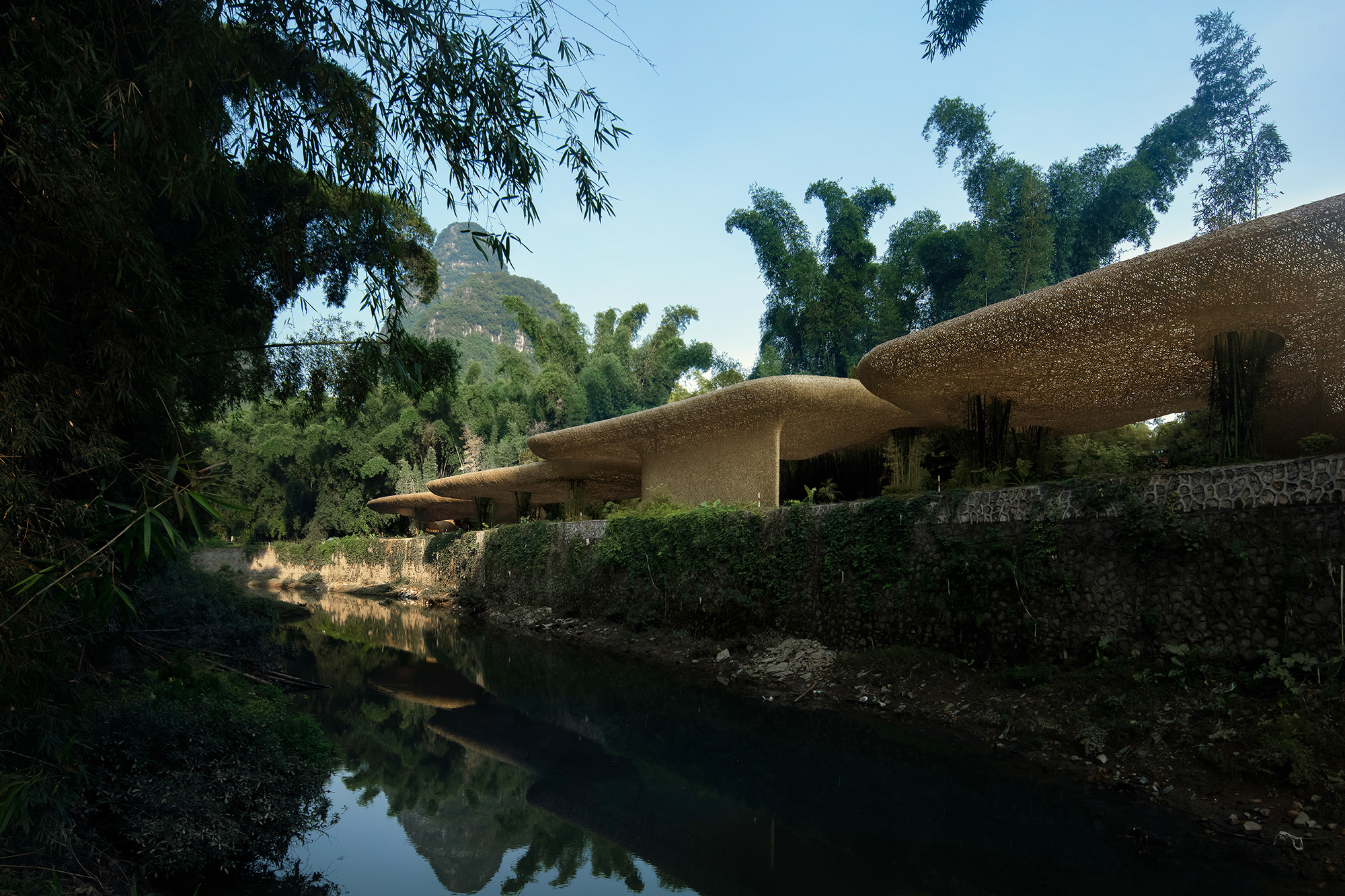
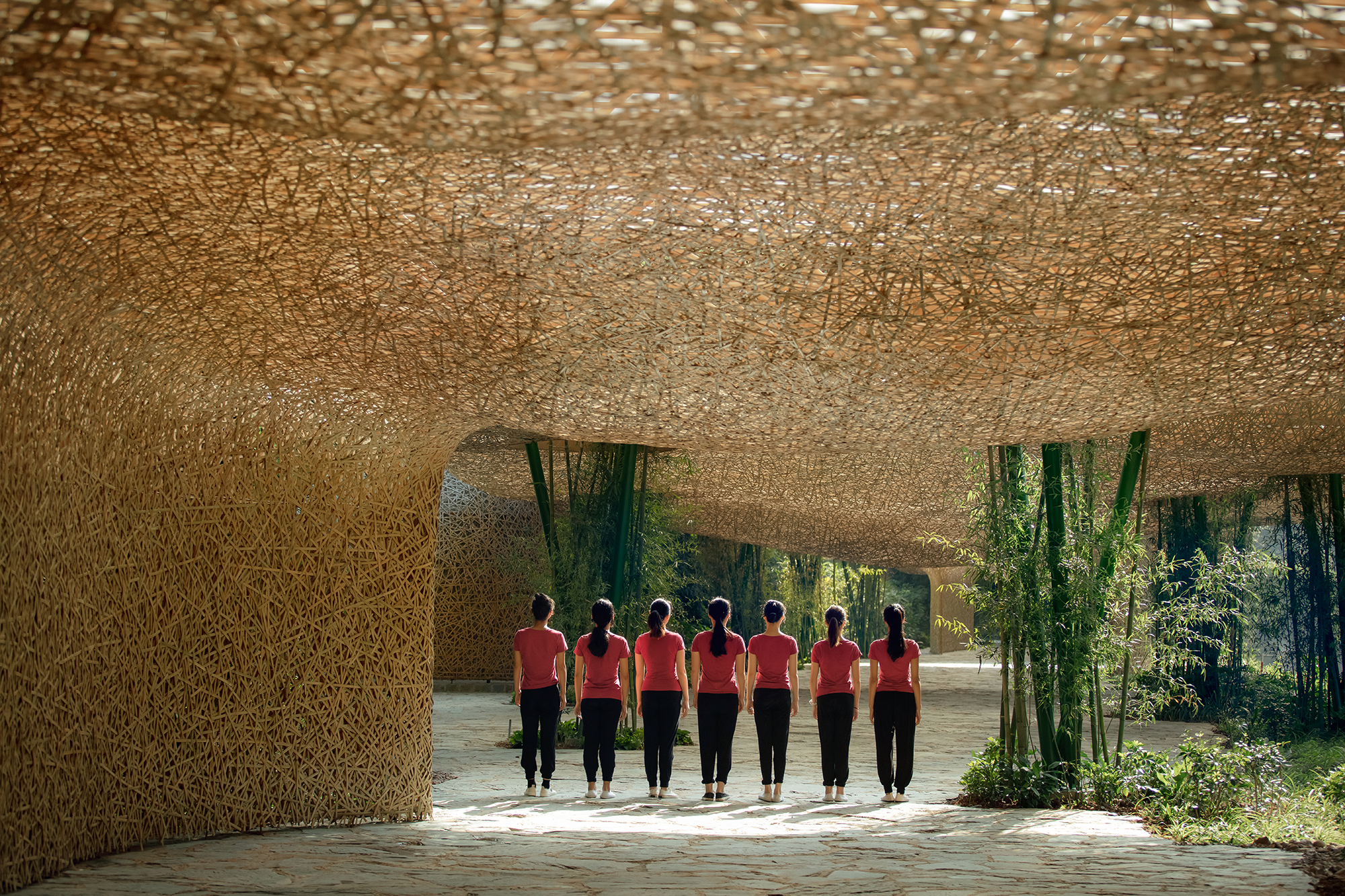 Bamboo Bamboo, Canopy and Pavilions, Impression SanjieLiu by LLLab., Guilin, Guangxi, China
Bamboo Bamboo, Canopy and Pavilions, Impression SanjieLiu by LLLab., Guilin, Guangxi, China
Jury Winner and Popular Winner of 2021 A+Awards, Cultural – Pavilions
These clouds of bamboo float on top of the circulation space between two performance spaces of a local show, Impression Sanjie Liu. The riverside site is backed by a continuous bamboo forest, which presents a relaxing natural context. Stretching 460 feet (140 meters) long, these canopies are hand-woven in a rather random way, using sliced bamboo strips to form subtle and organic shapes.

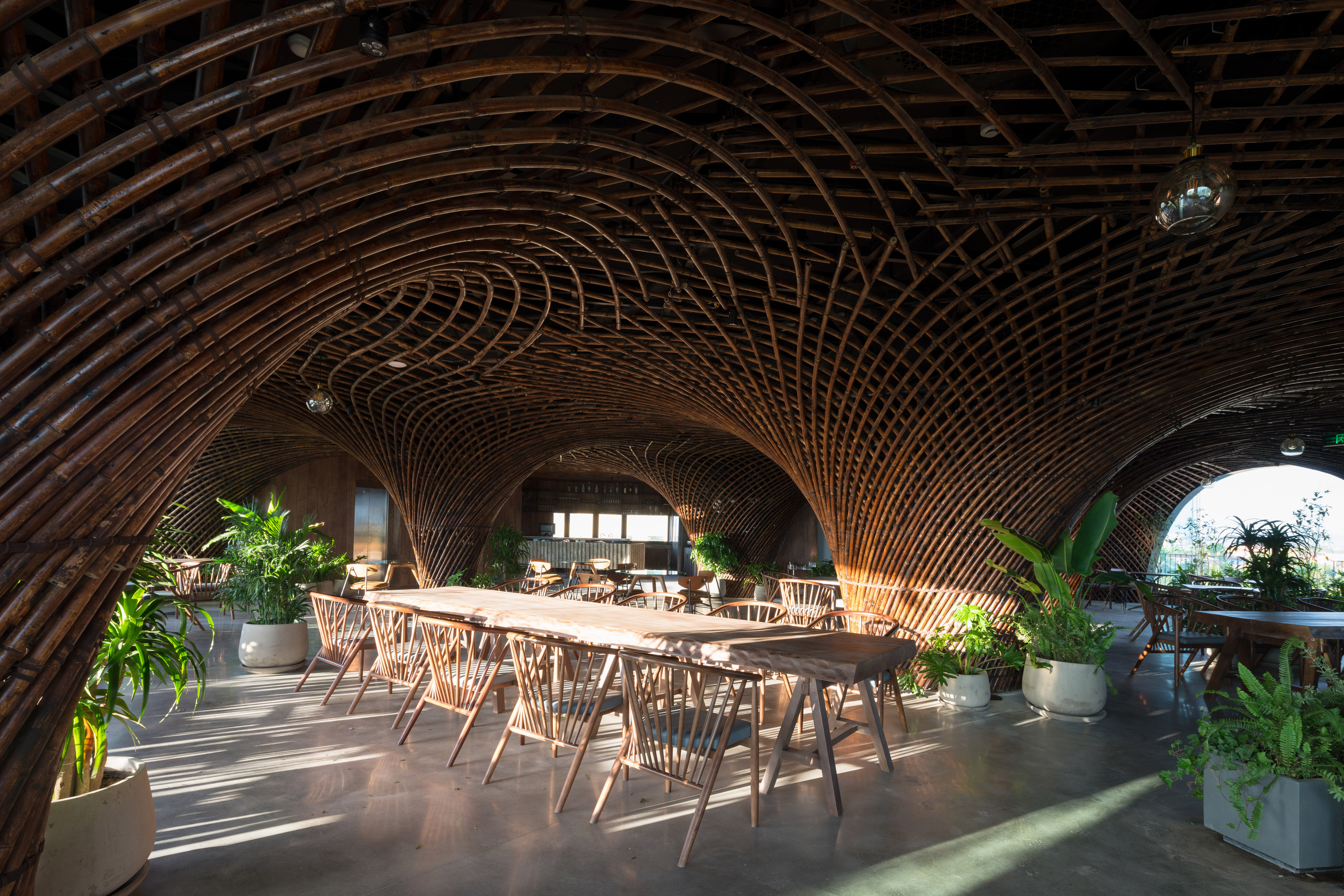 Nocenco Café by Vo Trong Nghia Architects, Vinh City, Nghe An, Vietnam
Nocenco Café by Vo Trong Nghia Architects, Vinh City, Nghe An, Vietnam
On top of a post-war Vietnamese building stands this undulating bamboo structure. Flexible bamboo stakes are carefully bent to form this cave-like interior intervention. The ceilings, formed by smoothly woven bamboo stakes, create a cozy yet stunning environment for guests beneath them. The whole café is softly divided into subspaces by the bamboo vaults. In the backdrop of these spaces is the cityscape framed by the vaults.
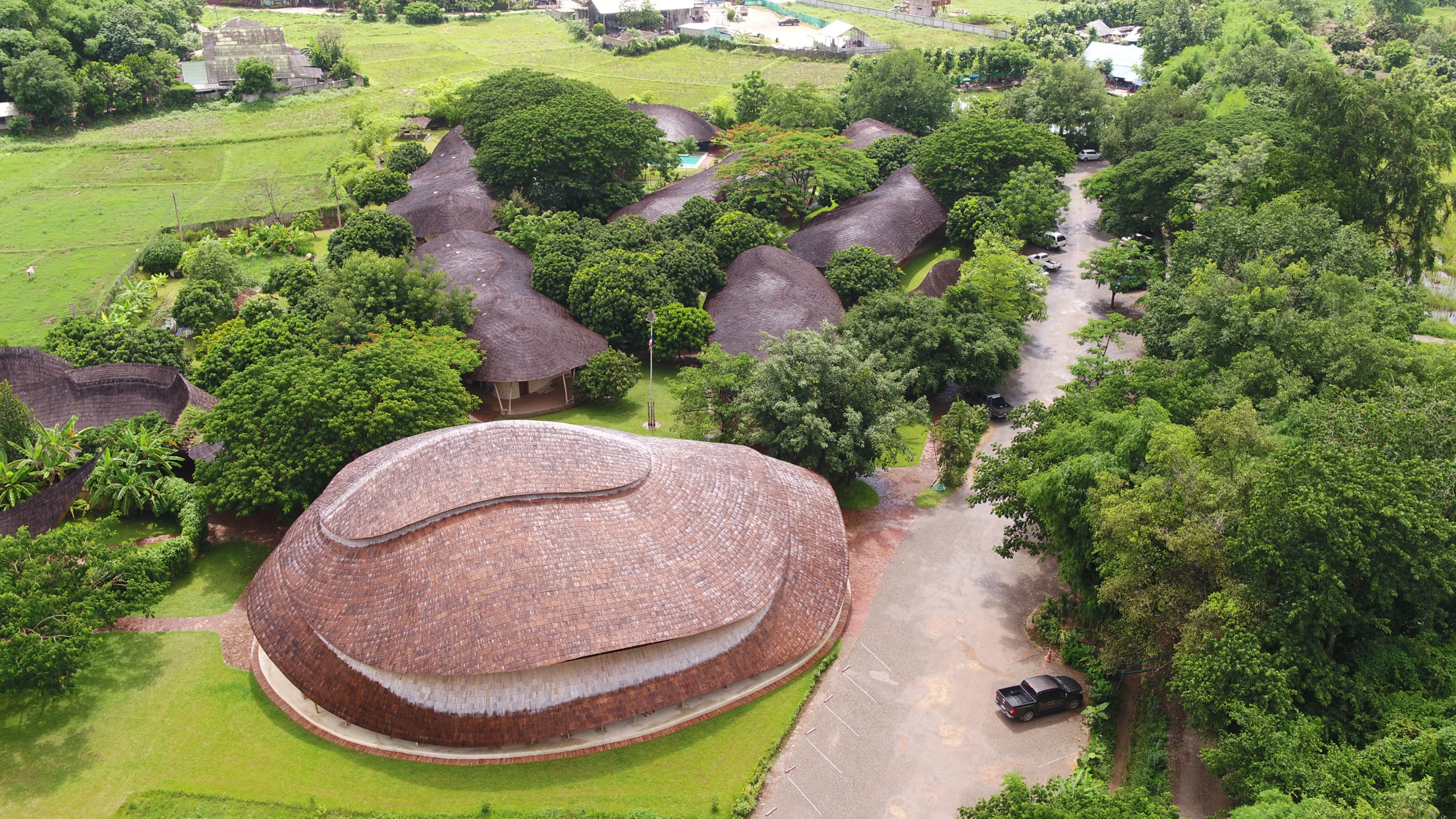
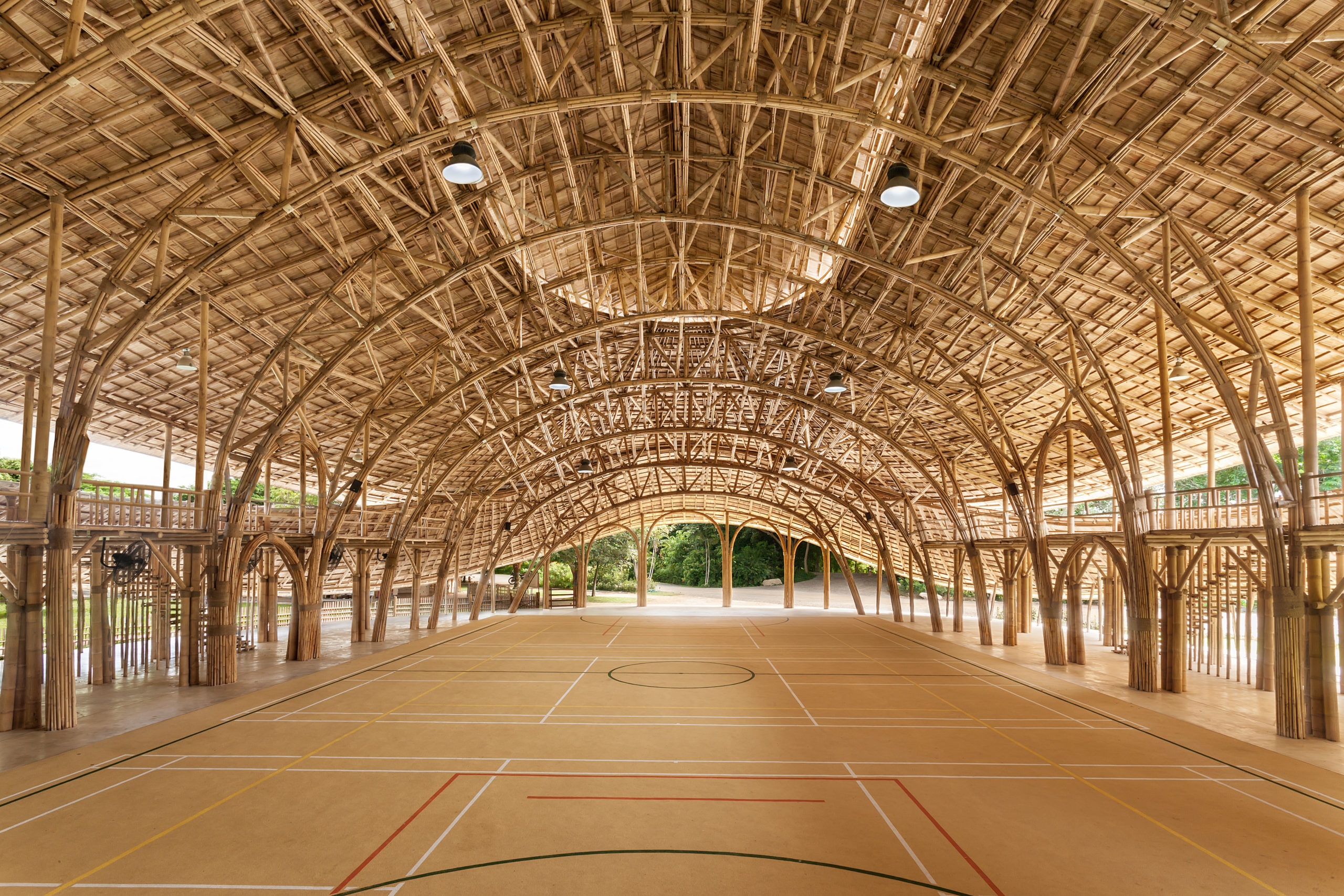 Bamboo Sports Hall at Panyaden International School by Chiangmai Life Architects, Chiangmai, Thailand
Bamboo Sports Hall at Panyaden International School by Chiangmai Life Architects, Chiangmai, Thailand
Popular Choice, 2018 A+Awards, Sports & Recreation – Recreation Centers
Jury Winner & Popular Choice, 2018 A+Awards, Concepts – Architecture +Engineering
The structure of this lotus-inspired sports hall is built entirely from bamboo, which results in its extremely low carbon footprint. The sports hall has a capacity of 300 people and accommodates courts for futsal, basketball, volleyball and badminton. The roof’s iconic wave harmonically resonates with the style of the surrounding buildings. Using bamboo stakes of different sizes, the project team bound large bundles of thin stalks that, together, form structural units that are as strong as a single thick branch would be. The aesthetic benefit of the former is to add visual diversity and intrigue.
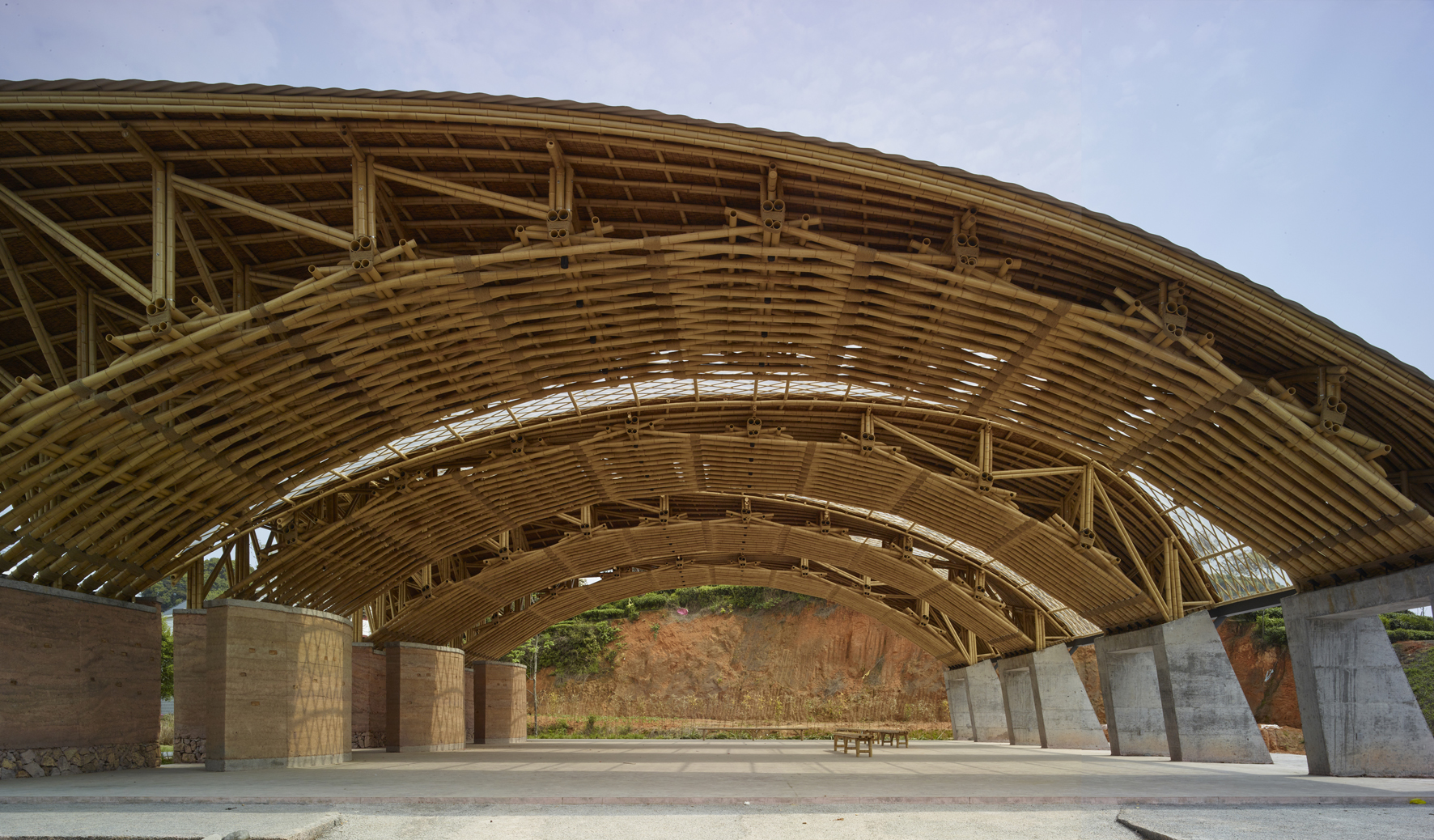
 Tea Leaf Market of Zhuguanlong by SUP Atelier of THAD, Ningde, Fujian, China
Tea Leaf Market of Zhuguanlong by SUP Atelier of THAD, Ningde, Fujian, China
Popular Choice, 2021 A+Awards, Details – Architecture +New Materials and Concepts
Popular Choice, 2021 A+Awards, Concepts – Architecture + Low Cost Design
The commission specifically required a large-span space to shelter different mega-events that normally include the whole town’s population, including seasonal tea trading, agriculture products trading, weddings and funerals. The project team chose the lightweight bamboo stakes to tackle this requirement. Sitting on walls of rammed earth and concrete, the roof that spans 60 feet (18 meters) wide consists of 4 layers of bamboo structure and is topped with timber planks, membranes and steel tiles.

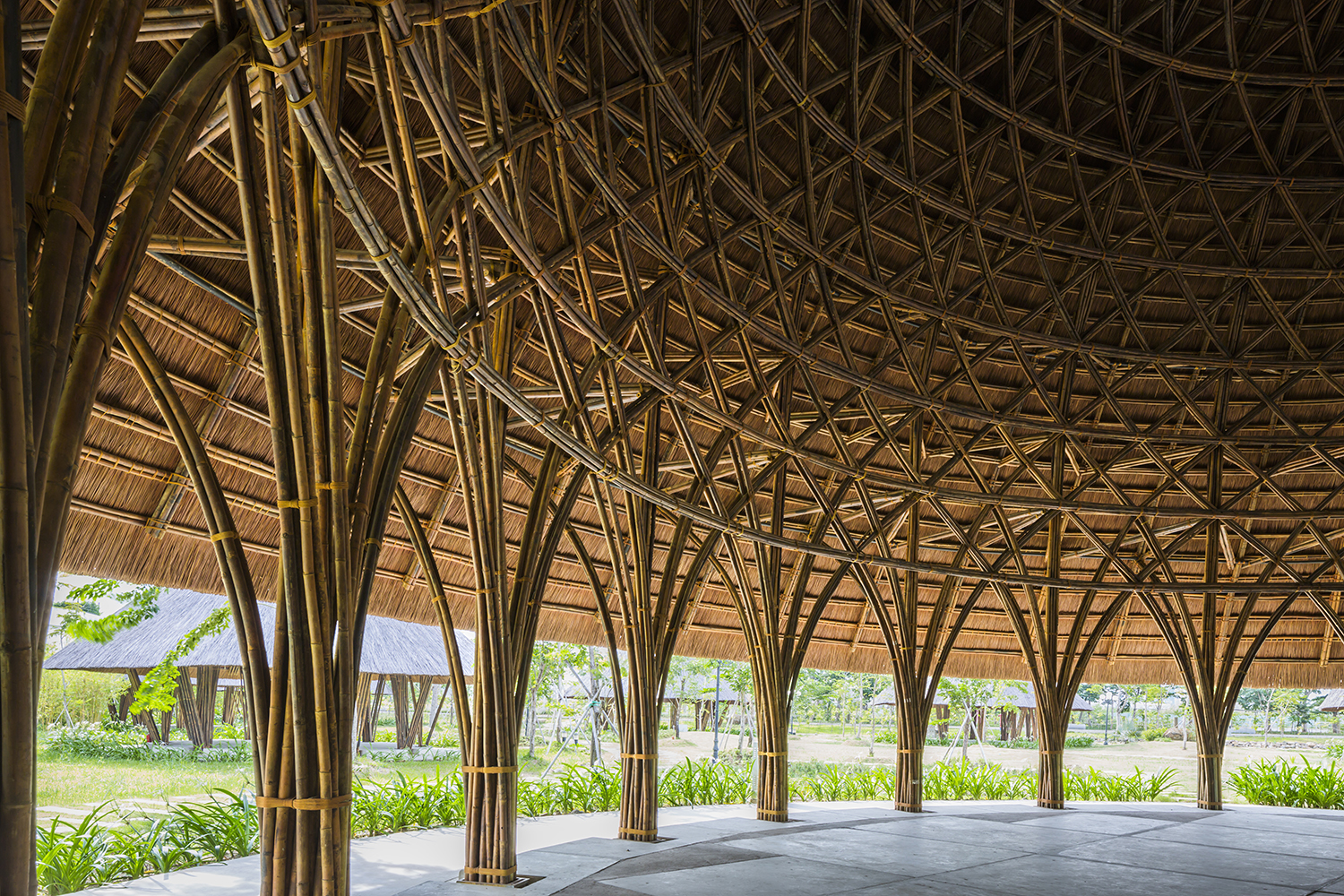 Diamond Island Community Center by Vo Trong Nghia Architects, Ho Chi Minh City, Vietnam
Diamond Island Community Center by Vo Trong Nghia Architects, Ho Chi Minh City, Vietnam
Diamond Island comprises a series of bamboo pavilions that scatter on an islet next to the Saigon River. The pavilions covered in thatches can host a variety of events such as parties, banquets and conferences etc. Supporting these circular roofs are bamboo stakes that are bound and woven together. The tall roof structures shelter the space underneath, helping to avoid overheating not only by blocking the sun, but also by allowing the heat emitted from the ground to escape out the open walls. With the heat going upwards, cooler air near the water is drawn into the ground space, keeping it comfortable and ventilated.
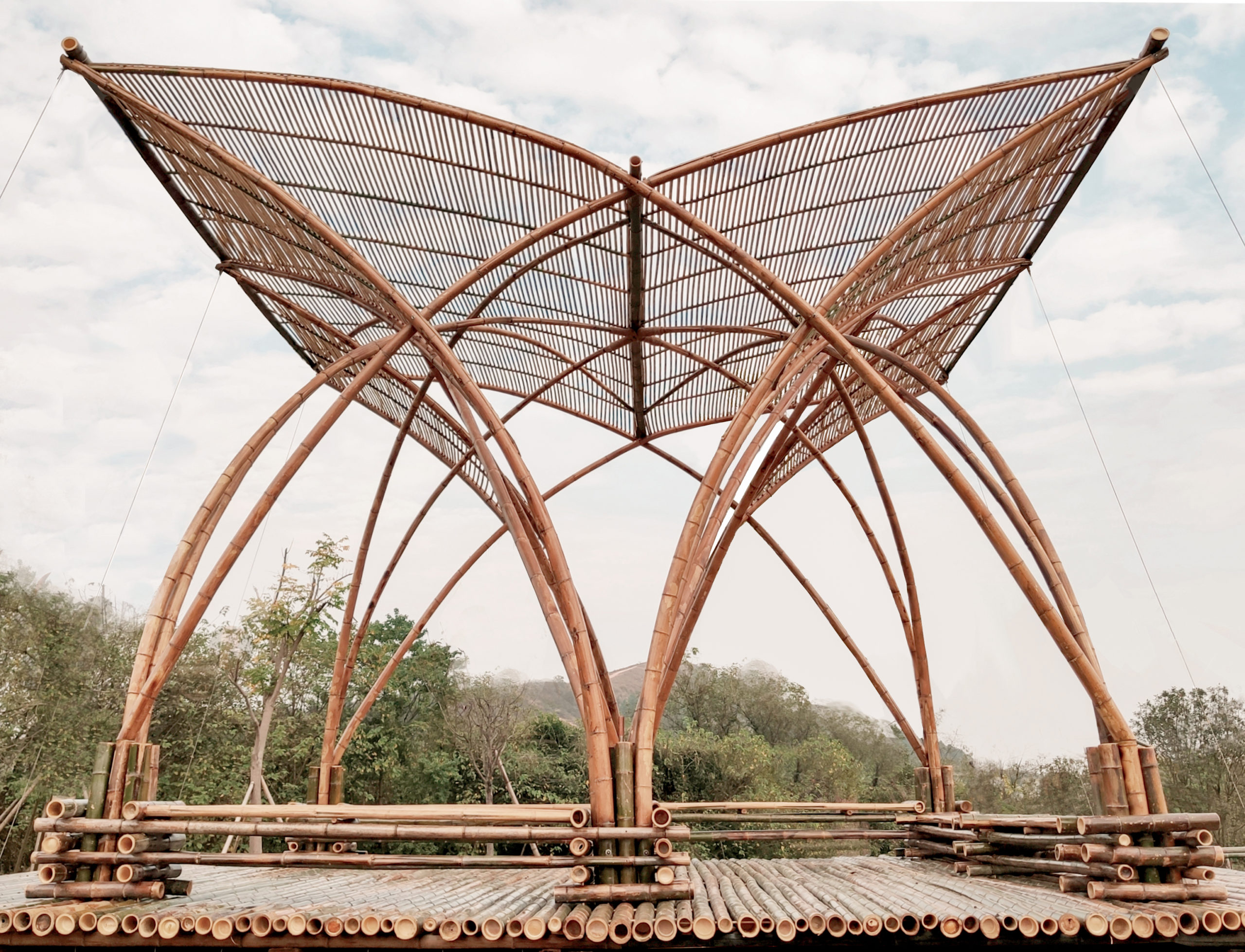
 Phoenix Pavilion by Jiangzuo Studio of Huazhong University of Science and Technology, Wuhan, Hubei, China
Phoenix Pavilion by Jiangzuo Studio of Huazhong University of Science and Technology, Wuhan, Hubei, China
This bamboo pavilion is sited on ecologically restored land that used to be a refuse landfill. Several fully grown bamboo stakes became the frames of this wing-like structure. For more convenient maintenance, the project team used steel components to connect these bamboo stakes, ensuring that that could be replaced individually should the need arise. Between the frames are sliced bamboo strips that form louvre roofs; they create a sheltered feeling that simultaneously (and somewhat paradoxically!) reinforce the openness of the space.
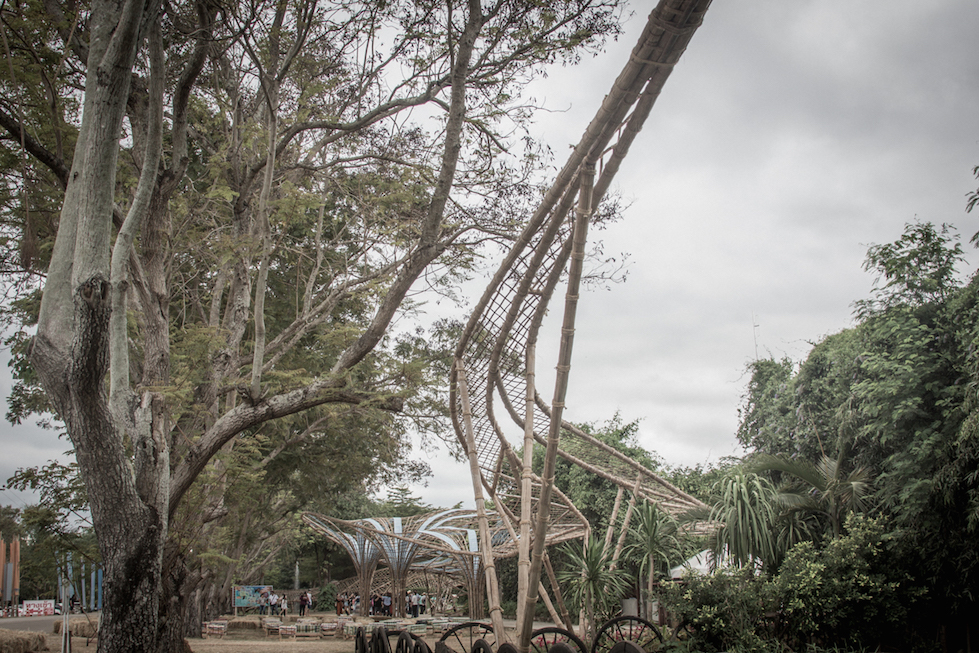
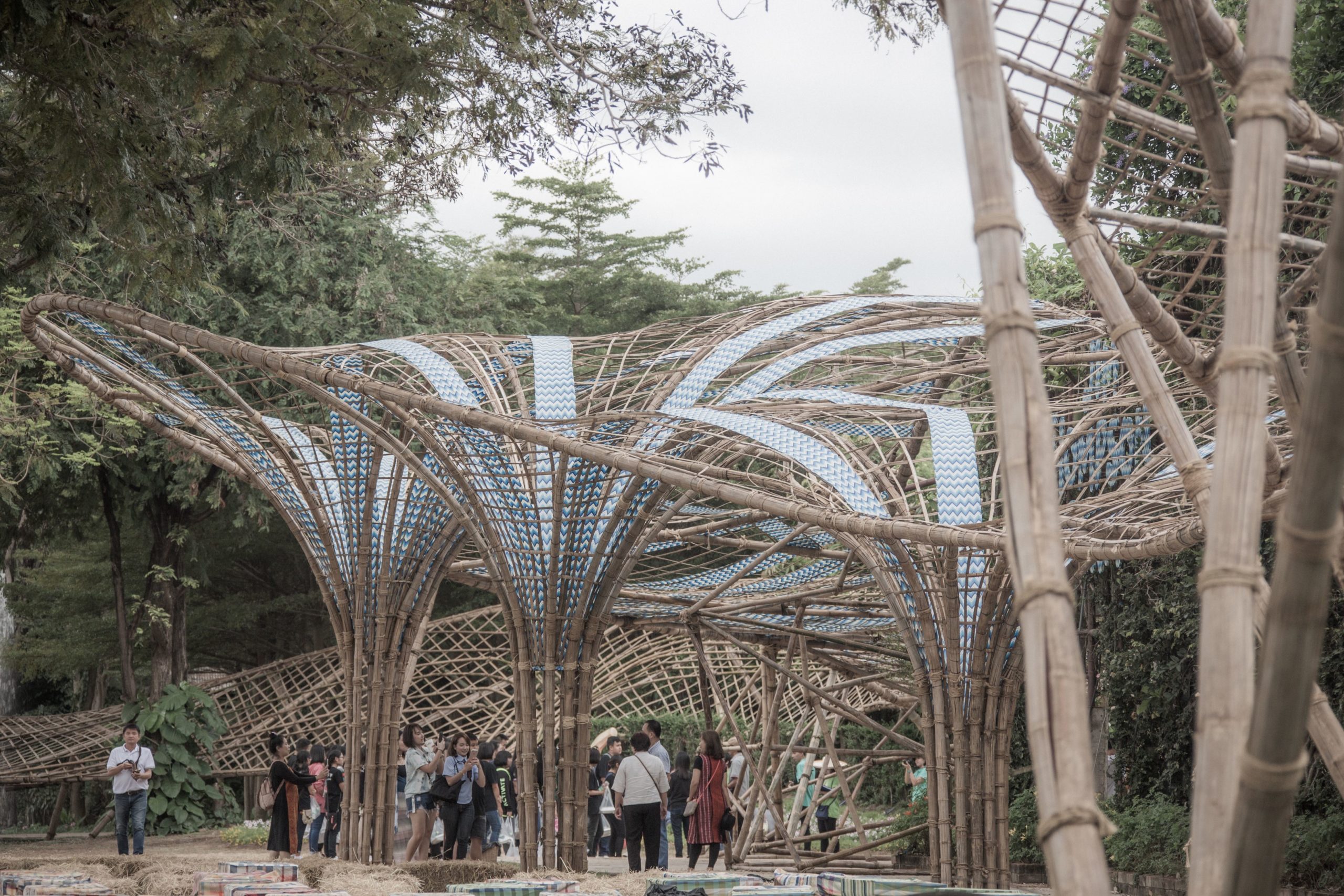 Mekong Pavilion at Jim Thompson Farm by PO-D Architects, Pak Thong Chai District, Nakhon Ratchasima, Thailand
Mekong Pavilion at Jim Thompson Farm by PO-D Architects, Pak Thong Chai District, Nakhon Ratchasima, Thailand
This 425 foot (130 meter) long pavilion is an extended entrance that invites visitors into Jim Thompson Farm. The pavilion is a combined steel and bamboo structure. Bamboo strips and stakes are skillfully twisted and fixed to mimic the running Mekong river, while the steel portions of the building are disguised. Far from a random assemblage, the overall form and shape of the structure consists of 5 distinct parts, each referring to a significant geological feature of the Mekong river.

 Bamboo Pavilion by LIN ARCHITECTURE, Shanghai, China
Bamboo Pavilion by LIN ARCHITECTURE, Shanghai, China
Jury Winner of 2021 A+Awards, Commercial – Pop-Ups & Temporary
Located on the rural island of Chongming, Shanghai, this winding structure aims to bring vitality to an empty site by providing a stage for social interactions. The structure is held up by a bamboo skeleton and then wrapped in sliced bamboo strips to form half enclosed spaces. Eight different types of bamboo joints are designed to realize its curvy form.
Architects: Want to have your project featured? Showcase your work through Architizer and sign up for our inspirational newsletters.
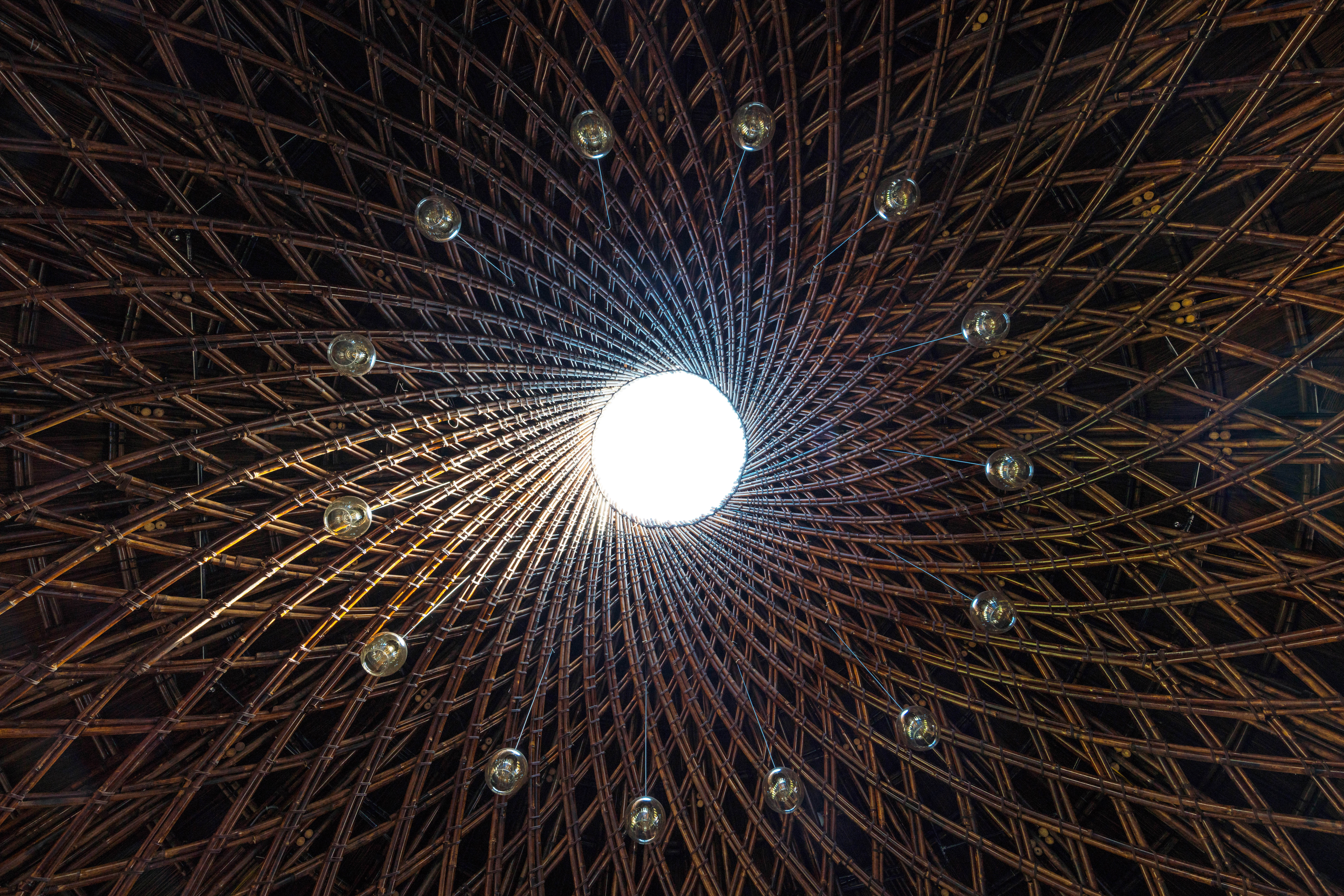





 Bamboo Bamboo, Canopy and Pavilions, Impression Sanjie Liu
Bamboo Bamboo, Canopy and Pavilions, Impression Sanjie Liu  Bamboo pavilion
Bamboo pavilion  Bamboo Sports Hall at Panyaden International School
Bamboo Sports Hall at Panyaden International School  Diamond Island Community Center
Diamond Island Community Center  Mekong Pavilion at Jim Thompson Farm
Mekong Pavilion at Jim Thompson Farm 
